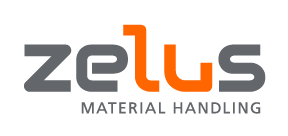Electric Chain Hoist Maintenance Tips
Proper maintenance is an important element for your electric chain hoist to ensure its longevity, reliability, and safety. Downtime, equipment failure and accidents can be significantly reduced by implementing a proper maintenance program.
Here you will find some important things to consider when implementing a maintenance program for your electric chain hoists.
1. Regular Inspections:
- Start-up checks: Daily operator checks at the start of each shift should
include inspecting chains, hooks, safety latches, limit switches and general
operation of the hoist. Deficiencies should be addressed immediately. - Annual Inspections: To ensure that the hoist manufacturer's specifications
and safety standards are maintained, schedule regular inspections to be
performed by qualified hoist service technicians at least annually.
2. Load Chain Maintenance: The most important part of an electric chain hoist is the chain itself. Always use OEM chains as they are specifically made for the matching hoist load sprocket. Electric hoist chains are case hardened meaning that only the very outer part of the chain is hardened. Once the hardened outer layer is worn, the softer core is exposed and wears away much quicker than one would imagine. It is therefore imperative that daily operators are made aware of their responsibility to ensure that the machinery they are operating is safe to use.
- Lubrication: Regular lubrication of the load chain is essential to prevent
friction and corrosion, which can lead to premature chain wear. Use a lubricant
recommended by the manufacturer and apply it according to their guidelines. - Inspection for Wear: To ensure good performance and protect the safety of
your operators, inspect the chain for signs of wear, elongation, or damage. Pay
careful attention to the bearing surfaces between the links. If any part of the
chain is worn or damaged, the entire chain should be replaced. Never try to
repair or join two load chains together.
3. Electrical operation:
Regular Testing: Daily checks should include testing the hoist's electrical
systems to ensure proper operation. Check motors, controls, limit switches and
emergency stop functions to make sure they are working as intended. Visually
check electrical cable and connections for loose, damaged or frayed
components. Report any noticeable damage, malfunction or odd noises so they
can be addressed immediately.
4. Hook and Latch Inspection:
Check the hooks for wear, stretching, gouges or bends. The safety latch on the
hook should always be in working order.
5. Limit Switches and Braking System:
- Make sure that the limit switches stop the chain travel at the top and bottom
limits of travel. - Test the brakes to make sure that they are functioning and there is no excessive
drifting when the controls are released.
6. Documentation and Record Keeping:
- Use a maintenance logbook to record activities, inspections, and repairs. This
documentation helps in tracking the hoist's maintenance history and identifying
recurring issues that may require more significant attention.
7. Operator Training:
- To reduce accidents that can result in injury or equipment damage, all operators
should be properly trained and familiar with the hoist's operation, maintenance
procedures, and safety protocols.
